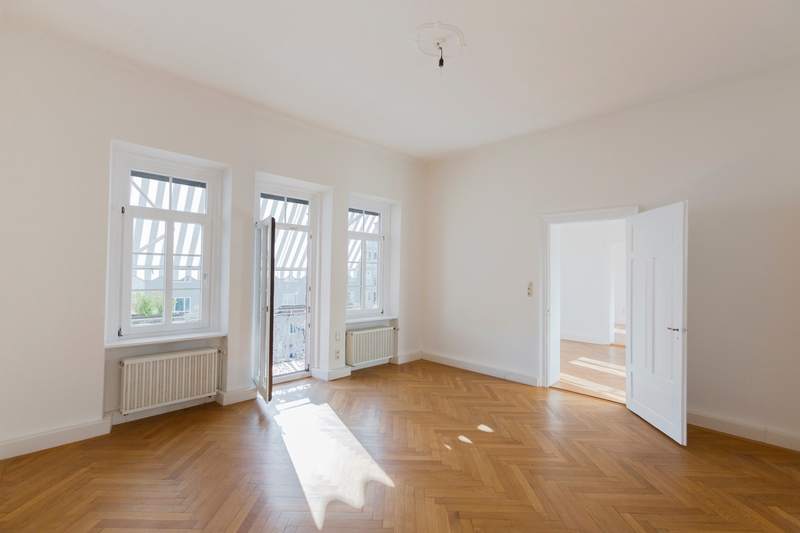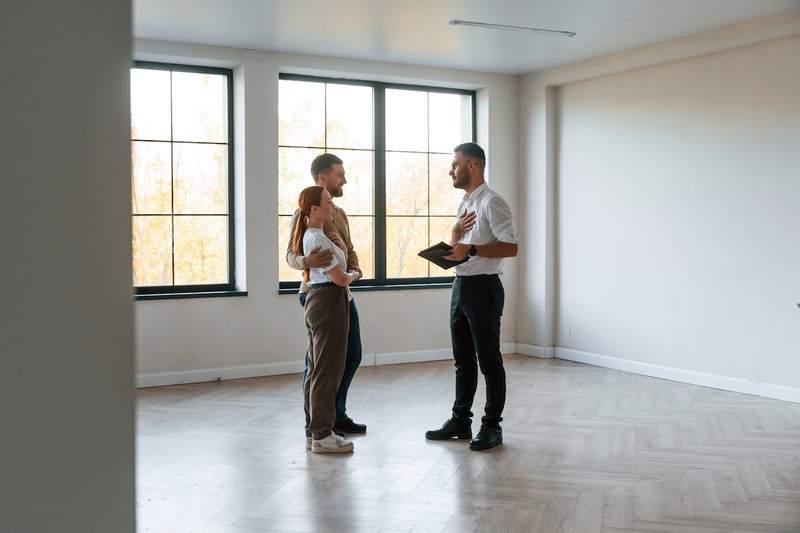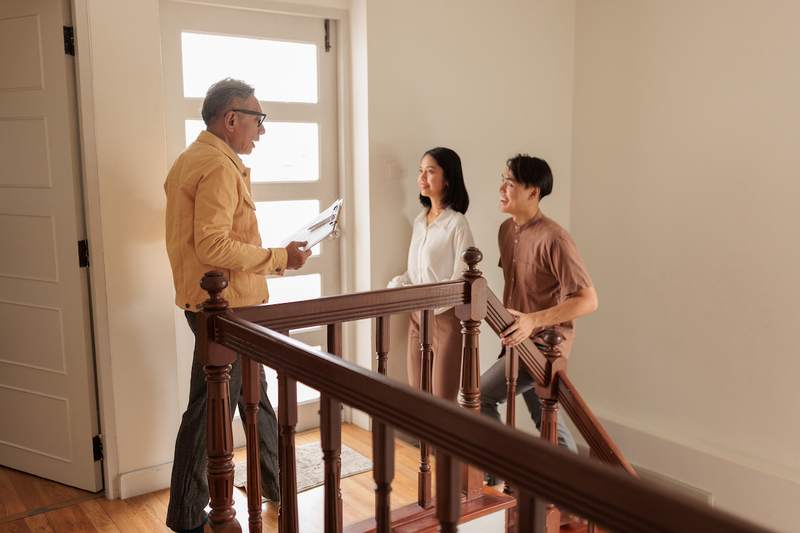If you’re shopping around to buy a new home, you’re likely to encounter a trend called white boxing.
Here’s what you need to know about white boxing in real estate:
- White Boxing Defined
- White Boxing vs. Staging
- Benefits of White Boxing
- Drawbacks of White Boxing
- When Is White Boxing Popular?
- White Boxing FAQ
- The Bottom Line on White Boxing
White Boxing Defined
White boxing is when the seller empties the home and presents a blank slate for buyers. In some cases, this includes stripping the floors, cabinets, and paint to show that the home is designer-ready.
White boxing allows buyers to imagine renovations or a remodel without the distraction of furniture that might not suit their taste. It’s the opposite of staging of a home.
“White boxing allows you to add your own personal touch to make it exactly how you want it,” says Seth Jenson, a Realtor at PLACE, a Bellingham, Washington-based realty company. “It’s kind of like getting a blank canvas to turn into your dream home!”
White Boxing vs. Staging
White boxing is an alternative approach to preparing a home for tours. But what is staging in real estate, and what makes it different from white boxing?
Staging
Staging is when a home is presented with aesthetically pleasing decorations and furniture to make it more appealing. This could involve cleaning, repairing, and depersonalizing the home to help buyers envision themselves in the space. Staging also makes the home more photogenic, which helps with marketing it online and in brochures.
Ultimately, the goal of staging is to sell the home more quickly. According to a 2021 survey, 22% of sellers’ agents say there are slight decreases in the amount of time that a home takes to sell when it’s staged.
White boxing
White boxing takes the opposite approach to staging. It presents the home as a blank slate, which can highlight features of the property that staging would distract from, such as great views or architectural details. White boxing is also a more transparent presentation of the home compared to staging, since flaws have nowhere to hide.
Benefits of White Boxing
For buyers, there are several advantages of buying a property that has been white boxed.
The home is designer-ready
When you purchase a white-boxed property, your new home will be ready to be redesigned according to your specific taste. Some sellers will strip the home of all trim, flooring, and paint, so it’s easier to hit the ground running on a remodel or renovation that can increase your property’s value.
Some remodels require building permits if you’re cutting holes for new doors or windows, or if you’re removing any electrical, gas, or plumbing systems. If the seller has already taken care of these things in the process of white boxing, then you just saved yourself the trouble of securing permits.
Saves money on demolition costs
White boxing could help buyers save thousands on demolition costs because any unwanted features already will have been torn down and cleared out by the seller. Tearing down an interior wall can cost 30 cents to $6.40 per square foot, and tearing out a floor can cost $400 to $1,100 per room. Demolition permits can also cost hundreds of dollars.
By saving on demolition expenses, you’ll have more money to put toward other costs, like your down payment.
Transparency
Another advantage of purchasing a white-boxed home is that you’ll have a better understanding of what you’re getting into, which can be helpful for first-time homebuyers. White boxing downplays imperfections by showing buyers there’s nothing to hide. You won’t be influenced by aesthetically pleasing decor.
Highlights desirable features
White boxing can highlight the best features of a home, such as its views, architecture, and location. Staging can be counterproductive when the extra furniture and decor distract from those desirable features.
Drawbacks of White Boxing
While a white-boxed property has its benefits, you should also be aware of the drawbacks. Some buyers aren’t interested in remodeling their homes — they just need a place to live.
The home might not be move-in ready
If you’re looking to move in quickly, a white-boxed property might not be right for you. Data shows that the construction stage of home renovations took an average of 2.7 to 4.5 months in 2019 — and that doesn’t include planning, which took about twice that long. While your home is being worked on, you’ll need another place to stay.
Can be expensive to finish the home
It can be costly for buyers to finish a white-boxed home. If the white boxing just means the home isn’t staged, then moving in will only cost you the fees to transport your belongings. But if it’s a home that has been stripped of paint, cabinets, and flooring, then you’ll also take on the cost to complete the house. People spent an average of $13,000 on renovation projects in 2019, so this is a cost that you should be prepared for.
The property might not comply with loan requirements
White boxing can involve removing flooring and appliances, which could make the home ineligible for Veterans Affairs loans, Federal Housing Administration loans, or other types of loans.
“If a buyer is going with an FHA or VA loan, and even most conventional loans, the property has to be in a safe and habitable condition,” says Ariel Baverman, a Realtor at Coldwell Banker Realty in Madison, New Jersey.
This means the home must have a working kitchen; flooring; no holes in the walls, ceiling, or roof; and no exposed wiring.
When Is White Boxing Popular?
These are the types of properties that you can expect to be white boxed.
High-end properties
If you’re in the market for luxury real estate, then you probably have the money to customize your home. Most buyers who purchase multimillion-dollar properties will remove all traces of the previous owner’s taste soon after moving in. If a home is white boxed, then the trouble of emptying it is already taken care of.
Luxury properties are also more likely to offer scenic views or historic architectural details. White boxing is designed to highlight these unique features rather than distract from them.
Deteriorating properties
Conversely, homes in poor condition are often white boxed. With a deteriorating house, there’s no sense in dressing it up and trying to stage the home to look like something it isn’t. Instead, white boxing involves removing all the dilapidated furnishings and presenting the property as is.
White Boxing FAQ
Here are the answers to a couple of frequently asked questions related to white boxing.
White boxing can encourage sales when it allows potential buyers to better envision how the home will look after it’s redecorated. White boxing can also help sales by highlighting attractive features in the home.
Vanilla shells and grey shells both are terms typically used in commercial real estate. A grey shell is a property that’s offered completely unfinished, and it typically has bare stud walls and might not include plumbing or electrical wiring. A vanilla shell is similar to a white box, but has heating, air conditioning, and plumbing. The walls are finished with sheet rock and might not be painted, though they will be ready for a fresh coat.
The Bottom Line on White Boxing in Real Estate
White boxing is a growing trend that you may encounter the next time you tour a property, if you haven’t already. By understanding what white boxing is and its purpose, you’ll have a better idea of how to evaluate a home that’s completely empty.
- National Association of Realtors (2021)
- Houzz (2020)






